NOTABLE NOVEMBER NEWS
ART
Content Courtesy of: nytimes.com
Written by: Florence Fabricant
An Art Show for Food Lovers
A gallery show looks at how some 20th-century artists depicted food and drink.

Artists have illustrated food and drink throughout the ages. An exhibition, “What’s for Dinner? A Brief History of Food in Art,” surveys 20th-century interpretations by more than 30 artists. It includes works by Édouard Vuillard, Georges Braque, Kazimir Malevich, Arman, Robert Indiana, Louise Nevelson and Anh Duong.
“What’s for Dinner? A Brief History of Food in Art,” through Jan. 31, Mondays through Saturdays, 10 a.m. to 6 p.m., Galerie Gmurzynska, 43 East 78th Street, 212-535-5275, gmurzynska.com.
Follow NYT Food on Twitter and NYT Cooking on Instagram, Facebook and Pinterest. Get regular updates from NYT Cooking, with recipe suggestions, cooking tips and shopping advice.
Florence Fabricant is a food and wine writer. She writes the weekly Front Burner and Off the Menu columns, as well as the Pairings column, which appears alongside the monthly wine reviews. She has also written 12 cookbooks.
Techno Titan Carl Craig Commissioned for Sound Project at Dia:Beacon, Five Years in the Making
Content Courtesy of: artnews.com
Written by: Andy Battaglia
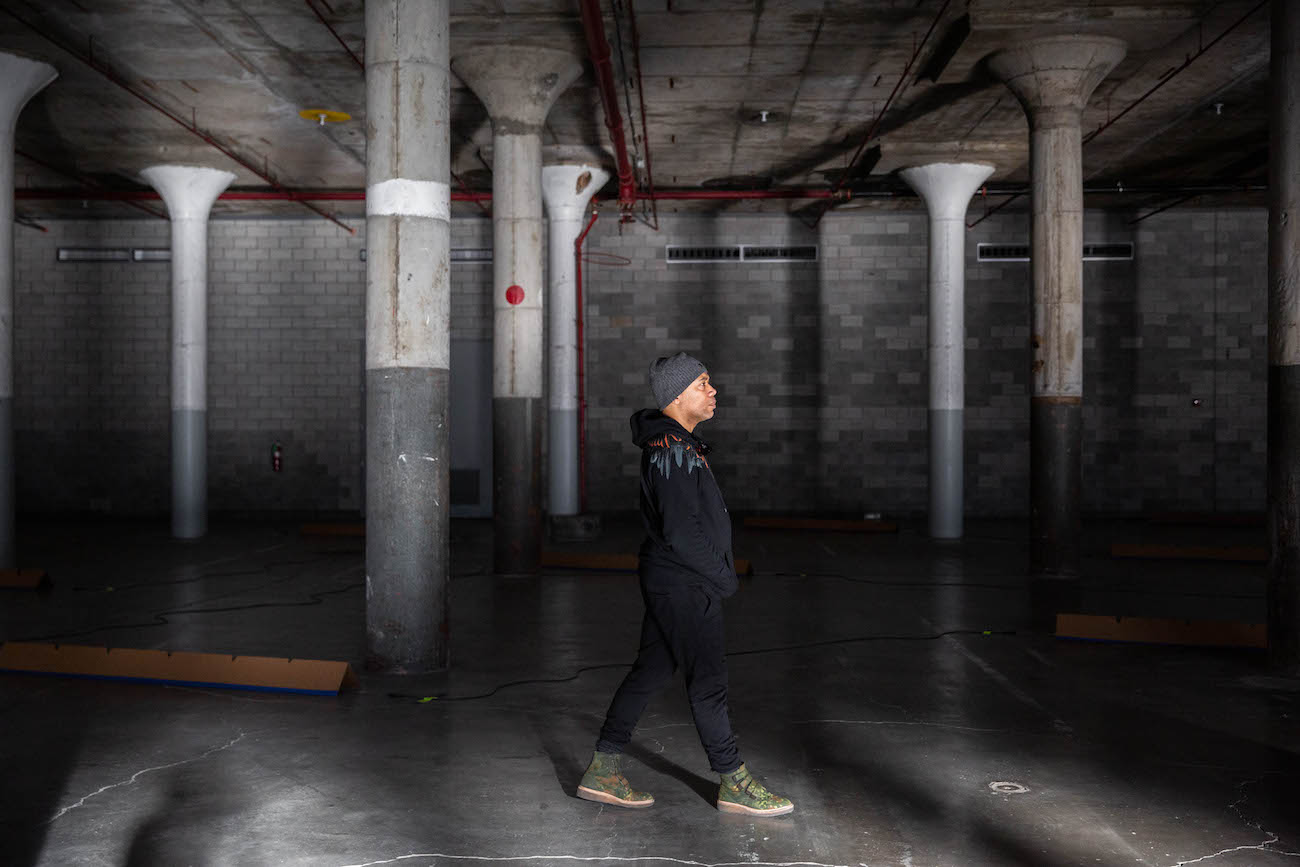
The spacious basement of Dia:Beacon—the museum for Minimalist art and extrapolations on its legacy in a post-industrial manufacturing plant in upstate New York—will soon be home to a sound installation by storied Detroit techno producer Carl Craig. Starting in March, the commissioned work—to be titled Party/Afterparty—will feature electronic music composed for the environs as well as visual elements to draw out aspects of the otherwise empty 35,000 square feet in the lower level’s largest gallery.
“It took five years for us to come up with something that would be not only worthy of Dia but also something that could really be a piece of me,” Craig told ARTnews of the project. The process began when curators at the Dia Art Foundation—an enterprise most often associated with sculptors like Donald Judd, Dan Flavin, and Walter De Maria—started thinking years ago of ways to mark the anniversary of the first Dream Festival, an early Dia production in 1975 that featured a program of music organized by composer La Monte Young and artist Marian Zazeela.
“We were thinking about the impact of Dia’s involvement with sound and what the next generation of that would be,” said Dia curator Kelly Kivland, who noted the foundation’s history with Young as well as sound artist Max Neuhaus, the creator of an installation that has been humming mysteriously for decades beneath a sidewalk grate in New York’s Times Square. “That led us to electronic music, and we really homed in on techno because of its attributes [owing to] Minimalist and Post-Minimalist sound and its effects today. Also there is the architectural element of potentialities in post-industrial spaces and different forms of experimentation.”
Craig—part of a fabled lineage for a legacy of techno music that was born and bred in Detroit—said he drew connections between his hometown and Dia:Beacon’s setting in a former factory that had been abandoned for years before it was transformed in an art-world destination in 2003. “I’m representing not only myself but also my background coming from the hood in the D,” Craig said. “The kind of space we’re working with at Dia, there are tons of abandoned spaces I’ve been working with my whole lifetime. The fall of the automotive industry in Detroit left all these factories that turned into party spaces—and a lot of them are still there.”
Of Beacon’s remote setting in the Hudson River Valley, Craig said, “It’s a different landscape for me and for anyone doing anything within DJ culture. But this isn’t a DJ culture show—though when people think of Carl Craig, they’re not thinking of a badminton champion.”
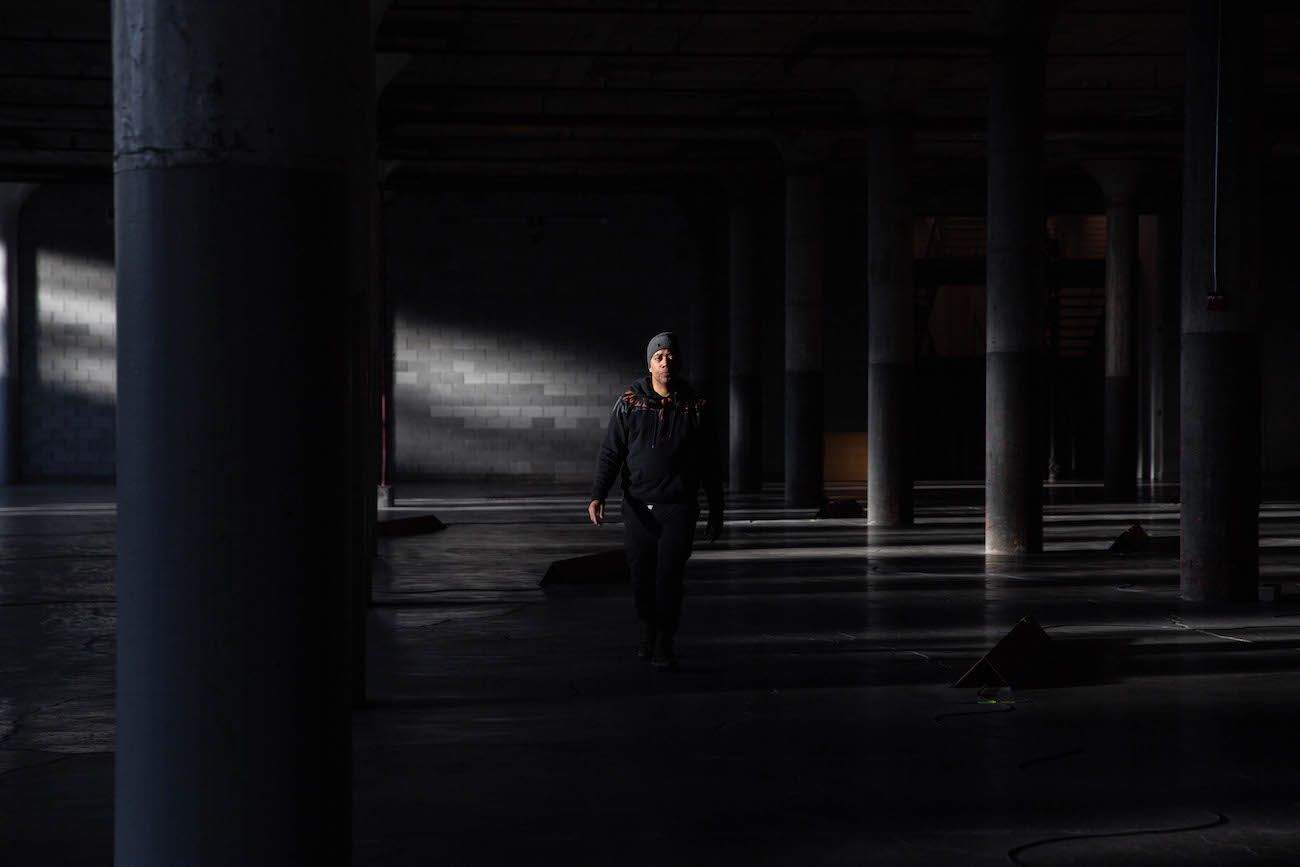
The sound for the installation has been composed via a mix of hardware and software—modular and analogue synthesizers plus studio programs and “stray frequencies made with oscillators,” Craig said. And though some of it will be rhythmic and made in mind of the dance floor, much of it will evoke the “afterparty” part of the title. “My experience of being on the road is that no matter how many people are in a room, you can still feel this loneliness,” said the artist, who has been traveling the planet and sometimes playing multiple gigs a night for many years. Some of the sound will signal the comedown mood that can follow a spell of clubbing revelry as well as the effects of the tinnitus he developed on the job. And all of it will commune with “a space so vast that controlling the room is virtually impossible. It’s about using what is untamable to my advantage.”
“There are some acoustic obstacles, let’s say, and things that need to be taken into consideration,” Kivland said of a concrete room with seven seconds of reverb. But the music was made for the space it will be in, and subtle visual elements will accentuate the experience too. “There is a lighting component that involves the windows, and there is an element that will allow for a dimensionless aspect of the space,” Kivland said.
Dia will release a record as part of the project, and programming during its six-month run into September will also include live performances as well as considerations of techno’s artistic and cultural significance. Otherwise, the sound will be the star.
“The music will be a sequence,” Craig said, “that changes and morphs as time goes on.”
Content Courtesy of: artnews.com
Written by: Maximilíano Durón
Manchester Museum Becomes First in U.K. to Repatriate Objects to Indigenous Australians

As more and more museums in Europe and the United States begin to return objects looted from indigenous peoples during moments of colonization, the Manchester Museum in England has become the first one to do so in the United Kingdom.
The museum has repatriated a group of 43 objects considered sacred to four different indigenous groups in Australia: the Aranda people of Central Australia, the Gangalidda Garawa peoples of northwest Queensland in the northeast of the continent, the Nyamal people of the Pilbara, and the Yawuru people of Broome, both in Western Australian, according to the Art Newspaper.
Many of these objects, which have not been on display for several decades, are believed to have arrived in the country over a century ago, and the official return was completed as part of a series of ceremonies held this week in Manchester, which is part of an ongoing project that marks the 250th anniversary of the arrival of Captain James Cook to Australia.
In an interview, the Manchester Museum’s director, Esme Ward, told the Guardian, “Very often people will say, ‘Is it a slippery slope?’ No, I really don’t think it is. I think some museums, or even the museum sector, is in a bit of an existential crisis—particularly museums that are born of empire. The conversation about where collections belong is getting louder and louder and museums are out of kilter with the public sentiment.”
The 43 objects are a small fraction of the over 32,000 Indigenous Australian objects currently held in British institutions, as identified by the Australian Institute of Aboriginal and Torres Strait Islander Studies. Many of these are held by the British Museum and the Victoria & Albert Museum, both in London. The institute has also identified more than 100,000 across 220 institutions worldwide, with many of these objects sitting in storage, according to the Guardian.
Mangubadijarri Yanner, who received the objects in Manchester for the Gangalidda Garawa people, told the Guardian, “We’ve always known that during the process of colonization, which is continuing today in various respects, that our cultural heritage items were removed from us, were stolen from us and taken from us. With these specific items, I can say with authority that they were taken without permission.”
Yanner added, “They were taken from us, stolen from us, but it’s important now that we’re here to take them home.”
ADVERTISING
One Whopper Jr., Hold the Toy
Content Courtesy of: nytimes.com
Written by: David Yaffe-Bellany
As environmental concerns grow, chains like Burger King and McDonald’s are rethinking what to offer with children’s meals.

In the climactic scene of “Toy Story 3,” Woody, Buzz Lightyear and the rest of the crew narrowly escape death when a remote-controlled claw lifts them from an incinerator just before flames engulf them.
Now Burger King is set to enact an alternative ending — collecting, sorting and chopping up hundreds of thousands of tiny toys, before melting them into hot plastic at a factory in northern England.
To anyone with childhood memories of beloved action figures, this may sound like an act of carnage — more Dante’s “Inferno” than Disney Pixar. But the “meltdown” is intended as a grand environmental gesture. Faced with growing public concern over the proliferation of single-use plastic, Burger King has vowed to stop giving away plastic toys with children’s meals in Britain and has encouraged customers to deposit old toys in collection bins at the chain’s locations there.
In December, the recycling firm Pentatonic will melt those orphaned action figures, then turn the raw material into playground equipment and reusable tray tables. Burger King plans to eliminate non-biodegradable toys from all its restaurants worldwide by 2025.
“That might be a shame for a tiny minority of people,” said Alasdair Murdoch, the chief executive of Burger King in the United Kingdom. “But it’s very clear that long term, people think that we’re doing the right thing.”
For decades, fast-food toys have operated as marketing tools designed to get children eating French fries and Chicken McNuggets. Politicians and public health advocates in the United States have repeatedly tried to ban them, arguing that fast-food marketing aimed at children contributes to obesity.
Those health concerns never swayed the major fast-food companies, but a viral British petition arguing that the toys “harm animals and pollute the sea” has made a stronger impression. It’s part of a growing public backlash against single-use, disposable plastic items like straws and cups, as well as myriad other plastic objects piling up in landfills, littering beaches and floating in oceans.
Burger King is not the only chain contemplating a toyless future. In 2018, McDonald’s established a task force to explore “ways to lessen the impact of the toys,” according to Elaine Strunk, the chain’s director of sustainability.
Based on the task force’s recommendations, McDonald’s has moved to scale back the distribution of plastic toys in Britain and other markets outside the United States, although it has stopped short of pledging to discontinue them. In October, McDonald’s offered its British customers Happy Meals with a choice of a toy or a bag of fruit.
Next year, children at its British locations will be able to choose between a toy or a book. In the past, McDonald’s has handed out Roald Dahl books, as well as stories about dinosaurs by the English author Cressida Cowell.
“We are on a journey across all of our categories and then beyond to make more sustainable environmental footprints,” Ms. Strunk said. “It’s always a lens through which we look at decisions we’re making.”

Burger King is collecting old plastic toys at its British locations. Next month, the toys will be melted so the plastic can be reused.Credit...Chelsie Craig for The New York Times
But environmental experts say it’s not clear whether eliminating plastic toys would meaningfully advance plastic reduction efforts in the fast-food industry, let alone make a dent in the broader pollution problem.
Burger King has said ending distribution of the toys in Britain would reduce its annual plastic footprint by more than 300 tons. But the context for that number is unclear: Burger King has not calculated the total amount of plastic it uses across its global markets, according to its chief marketing officer, Fernando Machado. And at some restaurants in the United States, Burger King continues to serve drinks in foam cups, even as McDonald’s and other chains have banned the environmentally harmful products.
McDonald’s officials said the company was still working out an effective way to calculate its overall plastic footprint and declined to reveal the volume of plastic toys it distributes each year.
“If you’re a company like Burger King whose packaging is seen as a big part of the problem, it doesn’t make sense to act on the toys but not on your packaging,” said Conrad MacKerron, who helps run As You Sow, a shareholder advocacy group that has pushed major fast-food companies to cut down on plastic. “The company seems to be trying to impose a certain priority on this which I don’t think is necessarily merited.”
Mr. Machado said Burger King planned to eliminate foam cups soon. And in the coming months, he said, the company will publish a website detailing the steps it has taken to reduce pollution.
“We’re not sitting here on any level saying that we are perfect,” said Mr. Murdoch, Burger King’s chief in the United Kingdom. “We’re on a journey, and we’ve got a long way to go, but we’re pretty keen on it.”
For years, McDonald’s and Burger King have resisted attempts to regulate the distribution of plastic toys, which began proliferating in the 1980s. The toys have proved to be powerful marketing devices. A study by researchers at Dartmouth found that knowledge of fast-food toys among young children “was associated with greater frequency of eating at McDonald’s.”
“It’s been a pretty important part of the business model of the companies that use them,” said Joel Bakan, the author of “Childhood Under Siege,” a 2011 book about marketing efforts aimed at children. “Both the packaging of the Happy Meal and the addition of the toy to it was highly effective in reaching children.”
In 2010, legislators in San Francisco voted to bar fast-food restaurants from giving away toys with children’s meals that fell short of nutritional standards, arguing that the figurines promoted unhealthy eating. But McDonald’s got around the ban on giveaways by charging 10 cents for each toy.
In the last decade, officials in New York, Nebraska and Wisconsin have tried and failed to ban the plastic toys, stymied in part by the lobbying muscle of the fast-food industry.
Now, rising environmental concerns over plastic waste appear to be succeeding where the obesity argument failed. And fast-food chains have grown increasingly focused on digital marketing tools, such as giving children scannable codes that can unlock games on branded apps, making plastic figurines less crucial to attracting younger customers.

Burger King plans to replace the toys in children’s meals with digital alternatives over the next few years. Credit...Chelsie Craig for The New York Times
“Maybe this is not the key for them anymore,” said Sara Ribakove, a policy official at the Center for Science in the Public Interest, which has campaigned against fast-food toys. “There’s a strong shift in the digital environment and the way we’re seeing marketing. It’s become much more personalized. It’s coming to everyone’s doorstep in a different way.”
Over the next few years, Burger King will gradually replace plastic toys with digital alternatives, company executives said, though the chain could also develop toys made from biodegradable materials.
A handful of other fast-food chains have scrapped the toys for commercial rather than environmental reasons. In 2013, Taco Bell announced that children’s meals would not be a part of its “long-term brand strategy.” Jack in the Box stopped giving away toys in 2011, saying, “We focus on adults and not children.”
But the major rival of McDonald’s and Burger King, Wendy’s, continues to offer the plastic figurines. Recently, the chain rolled out a line of Transformers toys. A Wendy’s spokeswoman did not respond to requests for comment.
McDonald’s has experimented with toy alternatives in a number of markets, including Germany and France as well as Britain. In Japan, McDonald’s allows customers to return toys so the company can convert them into trays, a project similar to Burger King’s initiative in Britain. In the coming years, McDonald’s officials said, the company expects to distribute fewer plastics toys, as books and other alternatives become more popular.
“It’s all about choice,” said Kandice McLeod, a McDonald’s official who oversees Happy Meal toys. “Our customers want to know that they have a choice in what they’re going to receive.”
In the United States, however, one crucial constituency appears to remain broadly supportive of plastic toys: children.
On a recent Sunday night at a McDonald’s in Brooklyn, 8-year-old Amber Smith sat quietly, playing with the miniature Pokeball that had come with her Happy Meal. As far back as she can remember, she said, fast-food toys have been her favorite part of McDonald’s.
“All the toys, in my opinion, are super awesome,” she said. “I’m not picky with the toys.”
Asked about the prospect of a toyless Happy Meal, Amber balled her hands into fists. “I like the food, too,” she said. But without the toys, “I’d make a tantrum.”
Versace Debuts Its Own Bite-Sized Soap Opera with Donatella and Helena Christensen
Content Courtesy of: wmagazine.com
Written by: Kyle Munzenrieder

The proliferation of new streaming services is getting out of hand. But maybe—just maybe—we'd make rom for Versace+ one day.
Fortunately for now, the Italian fashion houses's recent foray into scripted content is available to view for free in the form of a Versace Holiday Saga, which is a riff on campy soap operas. The idea was realized in collaboration with the American artist Sarah Baker and the U.K.-based art and fashion journal Baroness Magazine.
Narratively constructed as a letter to Donatella herself, the six-part micro-soap tells the story of "Angelina" (played by Baker), the CEO of Narcissist Records who has been accused of failing to properly credit a writer on her label's latest smash-hit "Spritz Me With You Love."
The accusation proves true, but the other writer is Angelina's one-time boy toy, named Angelo. Angelo, of course, is believed to be dead after having driven straight off of a cliff. Angelina, of course, soon suspects that her chief rival The Baroness, played by Helena Christensen is to blame. If this all sounds ridiculous and super soapy, well, that's the point.
You can probably guess that Angelo is not dead (he's played by the male model Jonathan Saxby). The world's sexiest "computer geek" (played by Simonas Pham) and Angelina's ingenue daughter (played by Meghan Roche) also figure in.
The clip not only features a glorious amount of Versace fashion, but a copious serving of other assorted Versace consumer items as well. There's Versace silverware, a Versace pool float, a Versace volleyball, a Versace ash tray, Versace martini glasses, and... well, you get the picture.
A director's cut of the entire narrative has already been released, and Versace has unleashed the first full episode on their YouTube channel.
The actual print edition of Baroness will feature an accompanying editorial, which hints at being even steamier.

While Versace is unabashed in its embrace of over-the-top luxury, at this point it's no surprise that Donatella continues to deliver it with a little bit of a knowing wink and a whole lot of camp. This is the label that reunites supermodels and has Jennifer Lopez close its shows (it is also the brand that makes Shalom Harlow dance).
Versace knows the value of spectacle and drama. So, a fresh take on the soap opera is fitting.
Indeed, as knowingly ridiculous as the narrative is, The Versace Saga gives us every single thing we need out of a soap (sex, scandal, and splendor). While we're not actually holding out hope for a Versace+ streaming service, maybe Quibi can order up a second season. They do seem to be green lighting everything right now.
RYAN REYNOLDS PITCHES A NETFLIX FILM, A SAMSUNG TV AND A GIN BRAND IN ONE AD
Content Courtesy of: adage.com
Written by: E.J. Schultz.
The spot by Adam & Eve DDB is the latest example of self-referential advertising
Talk about marketing multitasking. In his latest ad appearance, Ryan Reynolds pitches three products at once—his new Netflix movie, a Samsung TV and Aviation Gin.
The TV ad begins with the actor plugging Samsung’s QLED TV as the best way to watch the movie “6 Underground,” which starts streaming on Netflix on Dec. 13. Then, midway through, an ad for Aviation appears on the large-screen TV Reynolds is hawking, prompting him to confess that “I bought mid-roll ad placement.” The ad was handled by Adam & Eve DDB's New York office in collaboration with Reynolds’ production company, Maximum Effort Productions.
Reynolds has an ownership stake in the gin brand, which is controlled by Davos Brands. While the gin brand shares the stage with Netflix and Samsung, the spot marks its first national TV spot, according to a spokeswoman. The partnership extends to Samsung’s website, which highlights “6 Underground” as part of a plug that touts its TVs as the best place to watch Netflix premiers.
The TV spot, which shows Reynolds interacting with a character playing an ad director, is the latest example of self-aware advertising. The tactic—in which ads own up to being nothing more than ads—has risen in popularity this year. Oat milk brand Oatly, for instance, has run an outdoor campaign built primarily on self-referential ads, with language like “You actually read this? Total success” on a bus stop ad.
The meta approach fits Reynolds’ style. After all, he routinely breaks the so-called “fourth wall” in his “Deadpool” movies.
FRITO-LAY REWORKS 'SOUND OF MUSIC' CLASSIC INTO A HOLIDAY SONG BY ANNA KENDRICK
Content Courtesy of: adage.com
Written by: Jessica Wohl
The actress sings about a few of 'My Favorite Things'—including ugly sweaters, secret Santa and, of course, salty snacks—in the two-minute video
Frito-Lay is putting a winter spin on an iconic song to remind people to stock up on snacks for the hundreds of millions of holiday gatherings that will happen before the Super Bowl.
“My Favorite Things” from “The Sound of Music” has been transformed into a Christmas-meets-snacking tune sung by actress Anna Kendrick. The campaign is the biggest effort yet from Frito-Lay North America’s in-house creative team.
The lyrics of the Rodgers and Hammerstein classic were rewritten to include lines about Cheetos, Doritos, Lay’s, Smartfood popcorn, Tostitos, salsa and queso, as well as holiday-season traditions such as gingerbread houses, ugly sweaters and secret Santa.
“It’s a beloved song, so we didn’t want to do something that upset people that love the song,” says Chris Bellinger, VP of creative and digital at Frito-Lay North America, who oversees the PepsiCo Inc. unit’s in-house creative team.

'We didn’t want to do something that upset people that love the song,' says Frito-Lay's Chris Bellinger. Credit: Frito-Lay
A Frito-Lay employee was recorded singing the snack-filled tune when the team was tinkering with it but the part was kind of written with Kendrick and her personality in mind, says Bellinger. “She was our first choice,” he says.
As it turned out, the actress is a fan of Cheetos Puffs and other salty snacks, and enjoys gathering with her family in Maine for the holidays. What's more, she was available.
Kendrick sings the updated song in a two-minute video while wearing dresses in hues that could be described as Lay’s yellow and Doritos red, as well as a Lay’s ugly sweater and other winter gear. The actress, who describes the vibe of the spot as “winky,” says she added one idea that made the final cut.
“I think the only thing I pitched on the day was getting Cheetos dust on my mittens,” says Kendrick.
While snacking is synonymous with the Super Bowl—Frito-Lay has advertised during the big game in the past—the chip giant discovered that the Sunday before Thanksgiving and the day before Thanksgiving are the busiest days for snack shopping, while Christmas week is the busiest time of year for visits to stores.“We want to be a major player in this timeframe,” says Bellinger.
Frito-Lay says it sells nearly 100 pounds of snacks per second. And according to the company, Americans will take part in an estimated 327 million holiday gatherings between Thanksgiving and New Year’s, which presents a staggering number of chances to get salty snacks into people’s minds—and stomachs.

Anna Kendrick describes the vibe of the spot as 'winky,' Credit: Frito-Lay
Kendrick, who stars in the Christmas movie “Noelle” on Disney+ and is currently shooting the HBO Max anthology series “Love Life,” is the central character and only singer in the spot.
Eagle-eyed viewers might also recognize actor Matty Cardapole, who has appeared in shows including “Stranger Things” and in commercials for products such as Skittles. One of the women is played by Teresa Dalquisht, who, along with her sisters, had a moment of Internet fame a few years back and a series called "Golden Sisters” on OWN.
A 90-second version of the “Favorite Things” commercial will air during the Macy’s Thanksgiving Day Parade. There’s also a 30-second cut plus plenty of content suited for Instagram, Facebook, Spotify and elsewhere.
Frito-Lay’s multi-snack holiday-themed push follows a spot that ran this spring and summer called “The Perfect Side of Summer” and featured Doritos, Lays and Tostitos together, along with brief shots of cans of sibling brand Pepsi.
BUSINESS
DoorDash continues to lead in the food delivery wars
Content Courtesy of: cnbc.com
Written by: Frank Holland, J.R. Reed
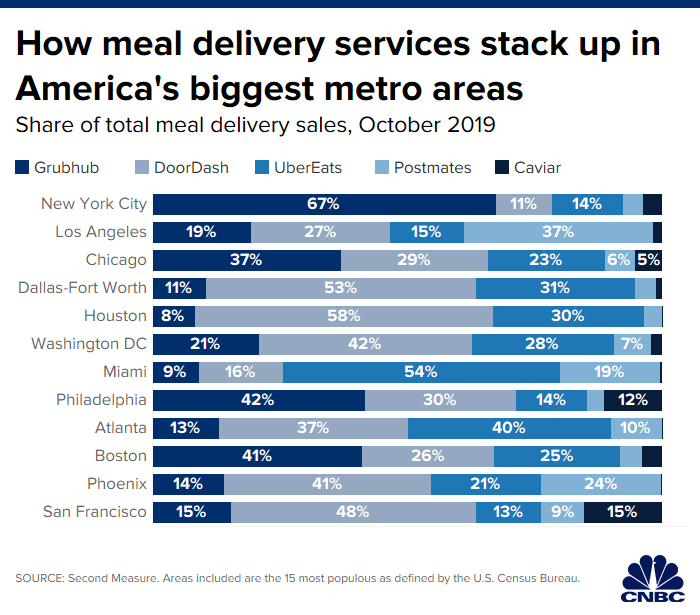
An exclusive partnership with Cheesecake Factory and deals to deliver for Chipotle Mexican Grill, Five Guys and other local restaurants made DoorDash the leader in U.S. meal delivery last month.
According to data from consumer analytics firm Second Measure, DoorDash has taken 35% of the meal delivery market. Publicly traded rivals GrubHub and Uber Eats have captured 30% and 20% of the market, respectively.
DoorDash is also the fastest growing, with sales increasing 114% since October 2018, while the overall market grew by 40%.
Analysts say meal delivery has even more room to grow. Last week, Morgan Stanley published research showing meal delivery services only address 6% of the $350 billion dollar quick-service restaurant market.
In a note on Wednesday, Peter Saleh, managing director and restaurants analyst at BTIG, added that “restaurant delivery will survive, if not thrive, given the healthy consumer demand for the service across quick service, fast casual and casual dining.”
DoorDash is reportedly planning to enter the public markets through a direct listing, according to a Bloomberg report. Based on recent investments, the company’s valuation is approaching $13 billion, the report said.
The meal delivery leader may now have the biggest share of customers nationally, but the landscape remains fragmented in major cities.
According to Second Measure data, DoorDash has the most customers in Washington D.C., Houston and San Francisco. GrubHub is the dominant player in New York City while Uber Eats grabs the top spot in Miami and Postmates is the leader in Los Angeles.
And, although DoorDash is increasing market share, it’s also facing increased scrutiny.
D.C. Attorney General Karl Racine is accusing the company of “deceptive” business practices, alleging DoorDash kept tips meant for workers and mislead customers about where their tips were going. Racine is seeking to recover millions of dollar in tip money that customers paid through DoorDash over the last two years. In July, following a petition from workers, DoorDash changed its policy, which had allowed the company to keep a portion of driver tips.
The overall meal delivery business is also facing increasing pressure on margins with the rise of price comparison tools available on Google and through the site FoodBoss. Adding to those headwinds, WeWork’s tumultuous past few months have raised suspicion over the valuations of aggressive entrants into traditional industries like food delivery.
Some analysts see GrubHub as the poster child for the industry’s challenges. The company has seen its market value cut in half this year as it spends heavily on promotions to stave off growing competition.
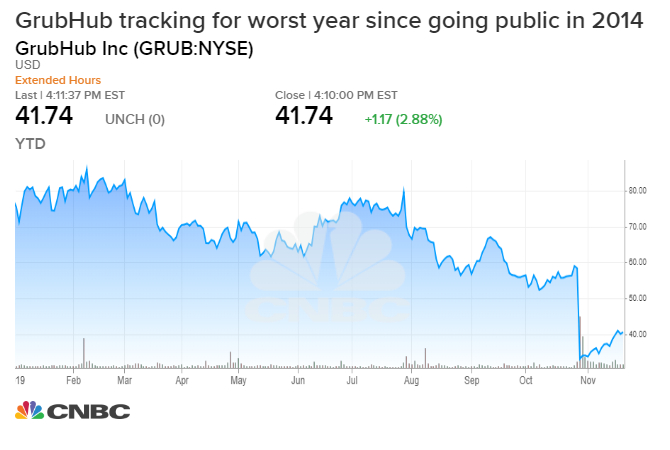
Shares of GrubHub plunged 43% on Oct. 29 after reporting disappointing orders last quarter and issuing a dismal forecast for future sales. That was the stock’s worst day of trading since going public back in April 2014.
Second Measure will publish its full report on U.S. meal delivery on Friday afternoon.
Correction: Uber Eats has the greatest market share of the delivery services in Miami and Postmates is the leader in Los Angeles, according to Second Measure. A previous version of this story misstated this information.
WeWork Lays Off More Than 2,000 Employees
Content Courtesy of: adweek.com
Written by: Diana Pearl
Troubled coworking company recorded a $1.25 billion loss in Q3
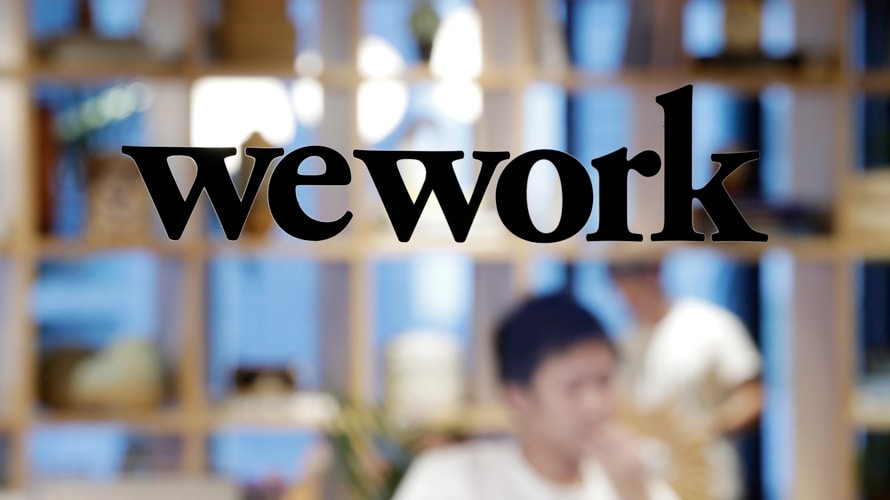
Word of pending WeWork layoffs surfaced earlier this week.
WeWork may have gotten a bailout after its IPO debacle but troubles continue for the coworking giant, which announced today that it has laid off 2,400 employees.
Rumors that massive layoffs would hit WeWork surfaced earlier this week, though those predictions had put the number of employees who would lose their jobs as high as 4,000. Those 2,400 employees represent a massive 19% of the company’s overall workforce; according to CNBC, WeWork had 12,500 employees as of June.
“As part of our renewed focus on the core WeWork business, and as we have previously shared with employees, the company is making necessary layoffs to create a more efficient organization,” a WeWork spokesperson told Adweek in a statement. “The process began weeks ago in regions around the world and continued this week in the U.S.”
The laid off employees will receive severance, according to the spokesperson, as well as continued benefits and job search assistance. “These are incredibly talented professionals, and we are grateful for the important roles they have played in building WeWork over the last decade,” the representative told Adweek.
It’s been a tough few months for WeWork, a company that had seemed poised for massive success. Earlier this year, it was valued at $47 billion and had been set for an IPO, which it filed for on Aug. 14. That filing did not go as planned, leading to the company’s co-founder and CEO Adam Neumann stepping down at the end of September.
Shortly afterward, the IPO was officially postponed and the company was forced to be bailed out by SoftBank, its largest shareholder. This past quarter, WeWork recorded a $1.25 billion loss.
WeWork is currently working on revamping its business with a “90-day game plan” it detailed at an investor’s presentation last month. In particular, the company is sidelining its second-priority ventures to focus on its core businesses.
TECH
Content Courtesy of: cnbc.com
Written by: Anmar Frangoul
Sony establishes A.I. arm that will focus on gaming and food
KEY POINTS
- Sony AI will have offices in Japan, the U.S. and Europe.
- To start with, it will launch projects in gaming, imaging and sensing and “gastronomy.”

Sony Corporation has set up Sony AI, an organization that will undertake research and development into artificial intelligence.
In an announcement Wednesday, Sony said the new venture would have offices in Japan, the U.S. and Europe, initially launching projects in gaming, imaging and sensing and “gastronomy.“
In its announcement, the tech giant said that the “adoption of new AI technologies developed through these flagship projects will be critical to further enhancing the value of Sony’s gaming and sensor businesses in coming years.”
It added that the research would be “pursued in close collaboration with the relevant Sony Group business units.”
The firm has already made moves into the “gastronomy” sector. In April 2018, via its U.S. subsidiary the Sony Corporation of America, Sony struck an agreement with Carnegie Mellon University to work on artificial intelligence and robotics research.
At the time, Sony said “initial research and development” would look into “optimizing food preparation, cooking and delivery.”
This area was chosen, Sony explained, because the technology needed for a robot to handle “the complex and varied task of food preparation” could in turn be applied to a wider range of skills and industries.
The topic of AI generates a great deal of discussion and debate. There is undoubted potential. The European Commission, for example, has said that AI can “bring solutions to many societal challenges” such as treating diseases and “minimizing the environmental impact of farming.”
The Commission does note, though, that ethical, legal and socio-economic impacts “have to be carefully addressed.”
Others have been more forthright in their views. In 2014, the late scientist Stephen Hawking told the BBC that the “development of full artificial intelligence could spell the end of the human race.”
Content Courtesy of: mashable.com
Written by: SASHA LEKACH
Juno abruptly shut down and refers riders to Lyft

The clock is ticking to take your final Juno ride.
The New York-only ride-sharing service announced Monday that by 6 p.m. that same day it would cease operations. Juno started in NYC in 2016 and was bought for $200 million by Israeli transportation company Gett in 2017.
This morning Juno users saw this message on the app:

On the company's website, it said the service was shutting down "due to the changing market situation."
In a news release, Gett said it had formed a "strategic partnership" with ride-hailing app Lyft. Gett, which claims to serve 15,000 companies, said the company plans to pivot to connecting corporate clients with Lyft.
SEE ALSO: Uber and Lyft trips just got more expensive in NYC. Here's why.
Gett also blamed "the enactment of misguided regulations in New York City earlier this year" for the end of Juno. New NYC regulations for 2019 capped the number of cars each ride service could offer and limited the amount of time drivers could "deadhead," or drive without paying passengers in the car.
Harry Campbell, a former driver who runs The Rideshare Guy blog about all things ride-hailing, credited Juno for creating a "hopeful beacon for drivers" with a tip button, lower commissions, and other pro-driver incentives and options.
But it couldn't convince riders to stick with the new service after discounts dried up — and Lyft and Uber are hard to ditch.
"I think this shows how important first-mover advantage is in the [ride-share] industry and also just how hard it is to grow ridership when Uber and Lyft's product work pretty well for the most part," Campbell wrote in an email.
Juno users were told Monday to switch to Lyft for future ride-sharing needs. An email said, "To continue riding, we recommend downloading the Lyft app. New to Lyft? Get $25 in Lyft credits. Simply click HERE to download the app and go to the Promos tab in the app and enter the code: LYFTJUNO25." The same message was in the app:

Juno was infamously known for promising drivers equity and dropping the ball with a small, one-time payout. At least now it's promising drivers and riders it won't sell their account data — that's something, right?
CULTURE
Content Courtesy of: cnbc.com
Written by: Sarah Whitten
‘Baby Yoda’ merch from ‘The Mandalorian’ is on its way, just in time for the holidays
KEY POINTS
- You’ll soon be able to buy merchandise featuring “Baby Yoda,” the breakout star of “The Mandalorian.”
- The character, which Disney calls The Child, was absent from the marketing and initial merchandise launch for the new Disney+ as to not spoil his surprise appearance.
- Apparel and accessories featuring the yet unnamed creature will soon be available through Amazon, Zazzle, Target, Kohl’s, Macy’s, Hot Topic and Box Lunch, as well as the Disney Store, ShopDisney and at the Disney Parks.
You’ll soon be able to buy merchandise featuring the breakout star of “The Mandalorian,” CNBC has learned.
The Child — or “Baby Yoda,” as “Star Wars” fans have been affectionately calling it — was absent from the marketing and initial merchandise launch for the new Disney+ show because showrunners Jon Favreau and Dave Filoni didn’t want to spoil his surprise appearance.
Apparel and accessories featuring the yet unnamed creature will soon be available through Amazon, Zazzle, Target, Kohl’s, Macy’s, Hot Topic and Box Lunch, a person familiar with the company plans said. These items could arrive as early as Friday.
Other products will also arrive at the Disney Store, ShopDisney and at the Disney Parks before the holidays. In addition, presales for toys and plush will be available in the coming weeks. It is uncertain when that merchandise will be shipped.

There are already two T-shirts available on Amazon. One retails for $22.99 and the other costs $25.99.
The Child has become a social media sensation since debuting at the very end of the first episode of “The Mandalorian.”
Notably, the cute creature has been called “Baby Yoda” because of his resemblance to the iconic “Star Wars” character and the fact that creator George Lucas has never revealed the name of Yoda’s species or his home planet.
So far, two episodes of “The Mandalorian” have been released on Disney’s new streaming service. A third is set to air Friday.
The series follows a Mandalorian bounty hunter in the years after the end of “Star Wars: Return of the Jedi” as the world adjusts to the fall of the Empire and seeks to build a New Republic.
Content Courtesy of: cnbc.com
Written by: Berkeley Lovelace Jr.
House committee approves landmark bill legalizing marijuana at the federal level
KEY POINTS
- The House Judiciary Committee approved a bill that legalizes marijuana on the federal level, removing it from Schedule 1 of the Controlled Substances Act.
- Some Republican members expressed concerns that the bill went too far and that it was unlikely to be taken up in the GOP-controlled Senate.
The House Judiciary Committee approved a bill Wednesday that legalizes marijuana on the federal level, removing it from Schedule 1 of the Controlled Substances Act.
The legislation, which passed 24 to 10, has a high chance of approval in the full House where Democrats control the chamber with 234 seats. It’s likely to face a tougher battle in the Republican-controlled Senate, where Majority Leader Mitch McConnell opposes marijuana legalization.
The legislation allows states to enact their own policies and gives them incentives to clear criminal records of people with low-level marijuana offenses. It also includes a 5% tax on cannabis products that would provide job training and legal assistance to those hit hardest by the war on drugs.
According to the American Civil Liberties Union, marijuana arrests account for more than half of all drug arrests in the United States. U.S. lawmakers on Wednesday repeatedly cited the disproportionate impact drug laws have had on communities of color, saying that decriminalizing marijuana helps alleviate some of that imbalance.
“The criminalization of marijuana has been a mistake,” Chairman Rep. Jerrold Nadler, D-N.Y., said during the markup of the bill. “The racial disparity in marijuana enforcement laws only compounded this mistake with serious consequences, particularly for minority communities.”
Some Republican members expressed concerns that the bill went too far and that it was unlikely to be taken up in the Senate.
“I don’t think a majority of the Republicans will support this bill,” Rep. Ken Buck of Colorado said Wednesday. “It is even less likely that the Senate would take it up. Therefore, I would just suggest that we deal with other bills that we can get a much larger bipartisan support from.”
In response, Nadler said that House Democrats can “negotiate” with the Senate, acknowledging Republicans won’t take the bill “as is.”
“I don’t think it’s a good idea ... to say, ‘the Senate won’t take this bill,’” he said. “When the House passes a bill, it’s part of a continuing process. It’s not the end of a process.”
The National Organization for the Reform of Marijuana Laws, also known as NORML, has called the legislation the “biggest marijuana news of the year.”
A majority of Americans support the legalization of marijuana, according to the Pew Research Center. The bill has more than 50 co-sponsors, according to Congress.gov. Backers of a Senate version of the legislation include, presidential contender Sen. Kamala Harris.
Only 11 states in the U.S. and the District of Columbia have legalized cannabis for recreational use. Medical marijuana, prescribed by physicians, is legal in 33 states and Washington, D.C.
The committee approval comes two months after the House passed legislation that would protect banks that serve marijuana businesses in states where the substance is legal.
Content Courtesy of: nytimes.com
Written by: Andrea Salcedo
The Secret Behind the Viral Churro Seller Video
A grass-roots criminal justice organization, Decolonize This Place, has become a clearinghouse for videos of police behavior on the subway.
[What you need to know to start the day: Get New York Today in your inbox.]
Sofia B. Newman, an actress with about 2,500 Twitter followers, was returning home from work this month when she saw a woman who was selling churros at the Broadway Junction subway station in Brooklyn having a heated discussion with four police officers.
Ms. Newman said she started recording the interaction with her phone so she would have evidence in case it escalated.
“The moment I saw four officers surrounding a woman of color, it was a red flag for me,” Ms. Newman, 23, said.
She posted the video, which shows the vendor being handcuffed, on her Twitter account at 12:30 a.m. and then went to sleep.
By the morning, the post had received nearly 50 retweets, mostly from friends and relatives, she said.
But Ms. Newman also received a message from Decolonize This Place, a grass-roots criminal justice organization. The group asked if it could post her video on its Twitter and Instagram accounts, along with a narrative of the arrest. She agreed.
And that’s when “it started blowing up,” Ms. Newman said.
As of Sunday, the post had been retweeted 11,300 times and had been liked by almost 25,000 people.
Within days of the altercation, several local officials, including Eric Adams, the Brooklyn borough president, and Corey Johnson, the City Council speaker, two Democrats who are expected to run for mayor in 2021, had seen the video and criticized the officers’ behavior.
It was just the latest in a series of videos, which have been viewed millions of times on Twitter, that have outraged many New Yorkers and resurfaced a conversation about police officers’ interactions with civilians on the subway at a time when Gov. Andrew M. Cuomo, a Democrat, is pushing for 500 more officers to be hired at a cost of nearly $250 million to patrol the transit system.
These videos have all followed a similar pattern: They were recorded by bystanders who happened to be in the subway when the encounters happened, and who in most cases had few followers on social media. Yet they attracted a lot of attention almost immediately after being posted.
The common denominator? They all gained prominence after being promoted on the social media accounts of Decolonize This Place.
Amin Husain and Marz Saffore, co-organizers of Decolonize, said the videos showed a reality that people of color had experienced for decades. “Now the argument can’t be made that this is a one-time incident,” Mr. Husain, 44, said.
The videos have put the Police Department on the defensive, demonstrating the power of social media and the role technology now has in holding law enforcement accountable. The police say civilians are focusing on the wrong people: Politicians are the ones who can affect the economic conditions that often result in people with limited opportunities loitering in the subway or selling food there illegally, they say.
“A lot of elected officials came out and their immediate reaction was to criticize the N.Y.P.D.,” Police Commissioner James P. O’Neill said of the churro vendor video at a news conference on Thursday. “I’d like to see a time when their first reaction is to help the woman that was selling churros.”
“It’s good that people see this,” he added, referring to the viral videos. “Being a cop anywhere is a tough job, and we need the cooperation from all 8.6 million New Yorkers.”
The phenomenon of videos of police behavior becoming viral is nothing new. In the past six years, footage captured by cellphones and police body cameras have prompted protests and started a national conversation on the role race plays in policing and the excessive use of force.
The difference in New York is that one organization, Decolonize This Place, has become the clearinghouse and gatekeeper for most of these videos.
Decolonize, founded in 2016, has 10 members and works with more than 50 other grass-roots organizations, Mr. Husain said. Its Instagram account has over 86,000 followers, and its Twitter account has nearly 11,000.
Since late October, when Decolonize posted the video of an officer punching two teenagers on the subway and another one depicting officers swarming into a subway car to arrest a man, Mr. Husain said people had been sending the organization about 10 videos a day. Staff members are also on the lookout for videos to post, as they did in the case of the churro vendor.
But his organization cannot post all of the videos it receives, Mr. Husain said. Five staff members who handle the group’s social media accounts — two of whom are pursuing advanced degrees in media studies — scrutinize the videos to see which ones might have the biggest reach.
The staff members make sure that a video is accurate and that they have enough context of the incident, Mr. Husain said. They also work to ensure that it does not depict a subway incident the group has previously brought to light.
Decolonize also avoids sharing videos that show people being beaten out of respect for the victim, Mr. Husain said. The organization says it asks for permission to use each video and has never paid for any content.
“It’s the combination of thinking about the Instagram account, about the content we put out, about the movement and the moment what makes these videos blow up,” he said. “It’s connected to on-the-ground organizing.”
Days before Ms. Newman recorded the churro vendor’s arrest, Erin Quinlan, a freelance journalist based in New York, recorded two officers asking a man to leave the First Avenue station in Manhattan. Ms. Quinlan, 40, said the tone of the conversation raised a “red flag” and pushed her to record it.
In the video, she can be heard repeatedly asking why the officers are trying to remove the man; they do not respond. An officer can be seen telling Ms. Quinlan: “Why don’t you mind your own business? It seems like you are looking for a lawsuit.”
Ms. Quinlan posted the video on her Instagram account the next morning and tagged Decolonize. At that point, it had been viewed only about 100 times, Ms. Quinlan said.
“I intentionally wanted them to see it,” Ms. Quinlan, who has about 450 Instagram followers, said of Decolonize, which received her permission to share the video.
It has now been viewed over 400,000 times, and has more than 19,000 likes and 900 comments on Decolonize’s Instagram account.
Without the organization’s help, she said, “there’s no question almost no one would have seen it.”
On Tuesday, another video of an arrest of a subway vendor went viral after it was shared by Decolonize.
The footage shows four police officers piling on top of a man on the subway platform at the 125th Street station in East Harlem. The Police Department later said the man, identified as Byron Shark, 26, had been selling candy illegally.
“When the officers attempted to take him into custody, he would not cooperate and refused to allow them to handcuff him,” the department said in a statement. “As a result, officers assisted in removing the individual from the platform, and the individual eventually walked on his own accord.”
Mr. Shark was arrested on charges of obstructing governmental administration and violating a local law.
On Twitter, that video has been viewed 488,000 times, and it has garnered 750 retweets and almost 1,500 likes.
Ms. Quinlan said her video had become so popular that she could not keep up with the hundreds of comments and direct messages she had received from supporters as well as critics. In the end, she said, she wished she had never been in a situation that required her to take out her phone.
“It’s not about Go! Yay bystanders!” Ms. Quinlan said. “It’s about what can we do to safeguard the most vulnerable of the community. I want no need for bystanders or good Samaritans.”
Michael Gold contributed reporting.
Andrea Salcedo is a reporter for the Metro desk, and part of the 2019 New York Times Fellowship class. @salcedonews
FASHION
Content Courtesy of:wmagazine.com
Written by:Kyle Munzenrieder
Victoria's Secret Confirms Its Fashion Show is Dead, But What Will Happen to the Angels?
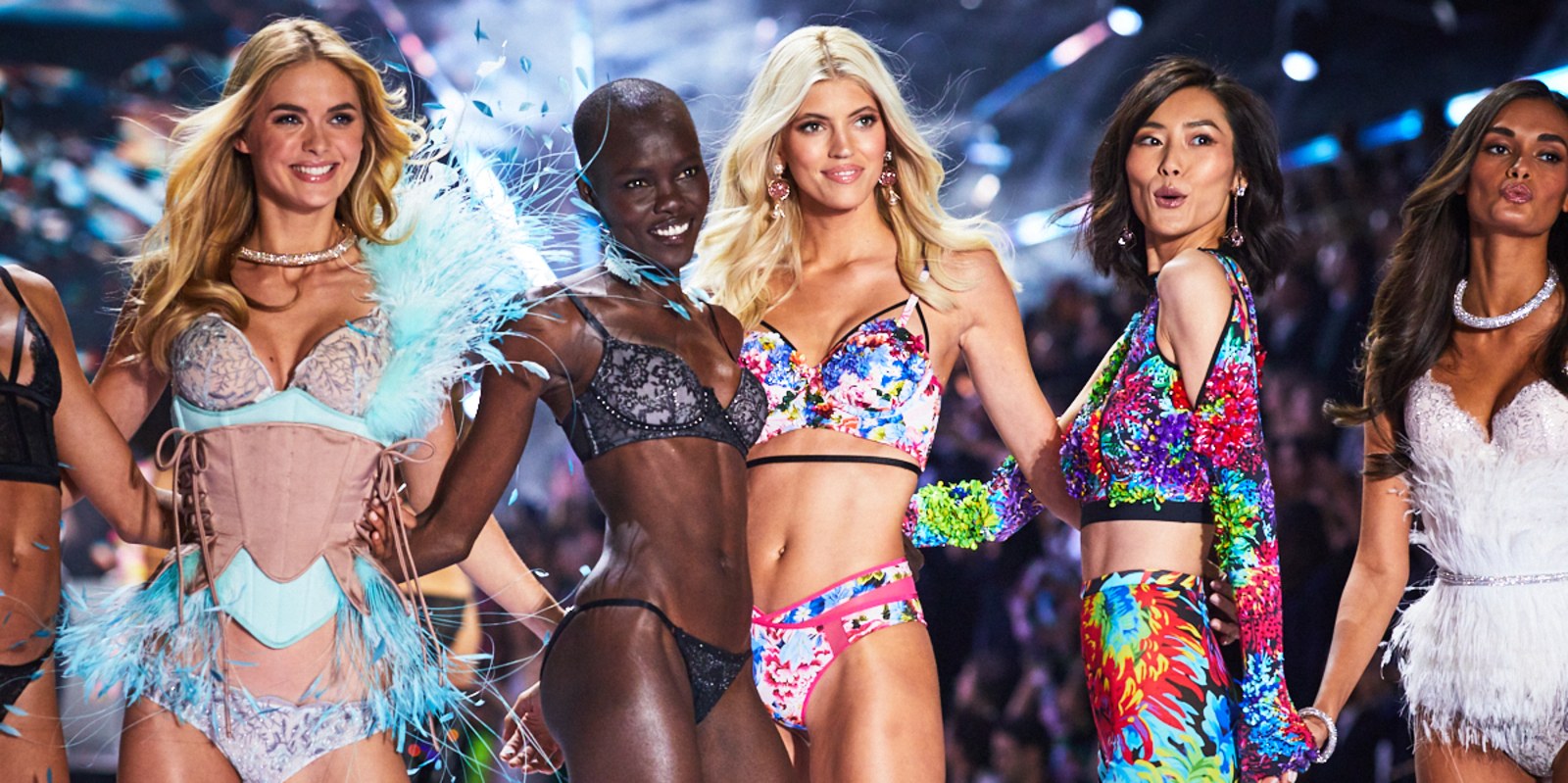
Victoria's Secret finally confirmed what seemed inevitable: it's annual fashion show spectacular is no more. According to WWD, in a conference call with analysts this morning, VS parent company L Brands' CFO and executive vice president Stuart B. Burgdoerfer acknowledged the brand was moving on for now. "It was a very important part of the brand building of this business and was an important aspect of the brand and a remarkable marketing achievement," he said. "And with that said, we’re figuring out how to advance the positioning of the brand and best communicate that to customers."
While dwindling television ratings and sweeping cultural shifts among young consumers made it clear that the VS Fashion Show as the public had known it for decades was in serious need of an update, the fact that the show went from institution to no more in just a year is still astonishing. Though, longtime chief marketing officers Ed Razek accelerated the fall by giving a fiery interview to Vogue in which he defensively claimed that the inclusion of plus-sized and transgender models in the show wasn't part of the brand's preferred vision "fantasy." Razek didn't resign from the company until August, but the fallout from his remarks were swift. The ratings for the 2018 show hit a record low (a repeat of NCIS: Las Angeles beat the show in total viewers), and business struggles have dogged the brand all year.
Concurrently, rival brands had found success in both buzz and at the bottom line by embracing inclusion. Rihanna's Savage x Fenty show, which streamed on Amazon Prime, proved that diversity was no detriment to fantasy. Her show featured multiple plus-sized models, transgender models, a drag queen, and even a few veterans of the VS show. For her part, Bella Hadid recently revealed that she felt far more confidant walking in her lingerie for Rihanna than she did at any other lingerie show (a comment that was interpreted as a dig at Victoria's Secret).
WATCH
Jasmine Tookes Tries On the $3 Million Victoria's Secret Fantasy Bra
If women buy lingerie to celebrate their bodies, it only makes sense that a brand would find success in celebrating all bodies. That doesn't seem like it's any big secret. At least in 2019.
Though Victoria's Secret is done with the fashion show (for now at least), the future of the Victoria's Secret Angels is still very much a question mark.
When a foursome of VS Angels (Josephine Skriver, Elsa Hosk, Jasmine Tookes and Romee Strijd) appeared together at an event for fast-fashion e-tailer BooHoo, Page Six reported that insiders were buzzing that the end of the VS Angel may be near. “It used to be that you did VS and you became this superstar,” a source identified as "a Victoria’s Secret insider" told Page Six. “The industry has just changed overall. I could see the Angels going away.”
While there was always some overlap and exceptions, many Victoria's Secret Angels (a select group that didn't include every girl who ever walked the show) existed in an eco-system separate from the models cultivated by high fashion brands on the runways of Paris and Milan. That didn't mean the Angels never had major high-fashion moments, it just meant that their career paths and the extent of their popular appeal were often different. In other words, the reverberations of the end of the age of the Angels may extend fay beyond the mall lingerie staple and into the wider fashion and modeling industries.
Then again, Victoria's Secret has continued to designate new models as "Angels" since Rezak's controversy (Grace Elizabeth, Barbra Palvin, and Leomie Anderson have all received the tag since), but without the signature event the women no longer have such a public platform.
The 2020 Met Gala Theme Is 'About Time'
Content Courtesy of:harpersbazaar.com
Written by:LAUREN ALEXIS FISHER
“What is time?” is officially the new “what is camp?”
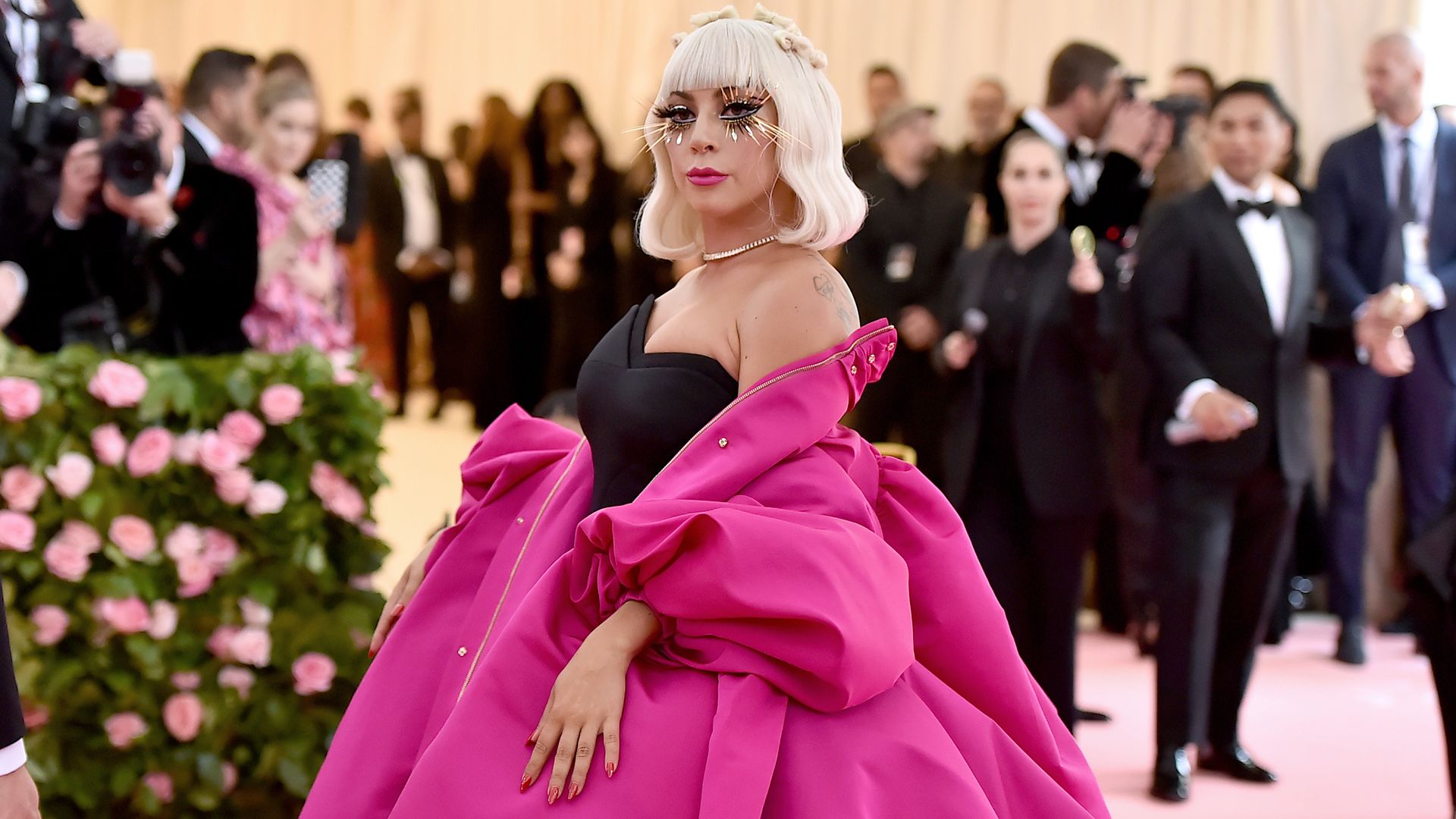
This year's camp-themed Met Gala delivered an endless stream of over-the-top red carpet moments (and several live outfit changes from Lady Gaga), but it's officially time to look ahead to the 2020 event. The Metropolitan Museum of Art announced the theme of next year's Costume Institute exhibit will be "About Time: Fashion and Duration.”
If you thought camp was confusing, you probably have some questions about what exactly a "time" theme means. Inspired by Virginia Woolf and 20th-century French philosopher Henri Bergson, the exhibit will look back at the timeline of women's fashion from the last 150 years (dating from 1870 to today) to coincide with the Met's 150th anniversary. Woolf will serve as the "ghost narrator" of the exhibit.

For a more specific image, Sally Porter's 1992 film Orlando, based on Virginia Woolf's time-traveling novel of the same name, served as the main inspiration for the 2020 theme. Starring Tilda Swinton, the movie's fashion spanned from 18th-century Marie Antoinette-inspired style to 19th century dressing. In other words, prepare to see some grandiose, "let them eat cake"-worthy looks on next year's Met Gala red carpet.

Tilda Swinton in Sally Porter’s 1992 film ’Orlando.’
“Fashion is indelibly connected to time, it not only reflects and represents the spirit of the times, but it also changes and develops with the times," Andrew Bolton, the curator of the Costume Institute, told the New York Times.
Given the range of a 150-year timeline of fashion, it may be one of the most abstract and eclectic Met Gala red carpets ever—with celebrities being able to time-travel back through several centuries of fashion. Or, of course, they technically could opt for something that's "timeless."
The co-chairs of the 2020 Met Gala are Meryl Streep, Emma Stone, Lin-Manuel Miranda, and Nicolas Ghesquiere of Louis Vuitton (the brand will serve as a sponsor for the event). Most excitingly, it will mark the first ever Met Gala attendance for Streep.
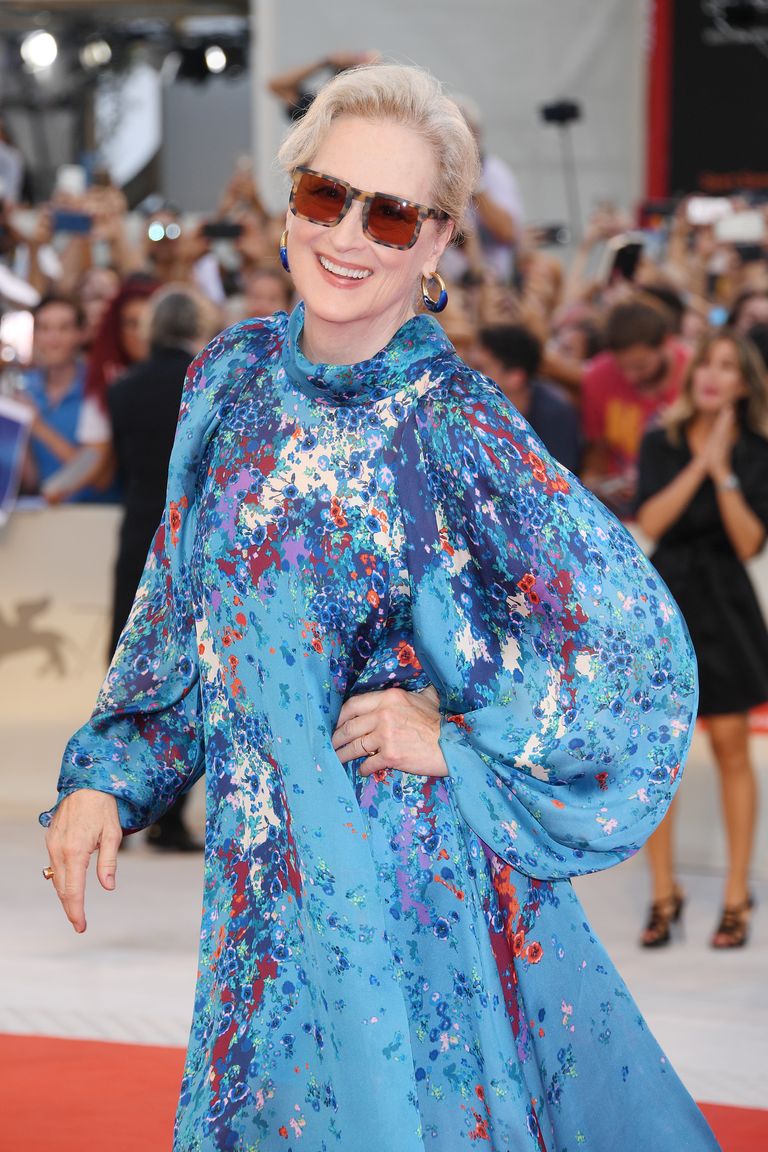
Meryl Streep is co-chairing the 2020 Met Gala, marking her debut at the annual fashion event.
The 2020 Met Gala will be held on May 4 at the Metropolitan Museum of Art and the exhibition will open to the public on May 7, 2020.












